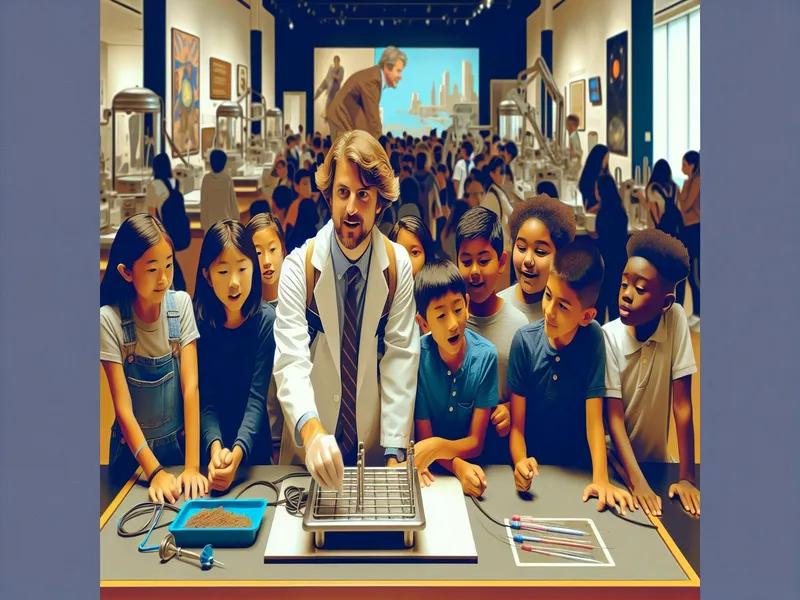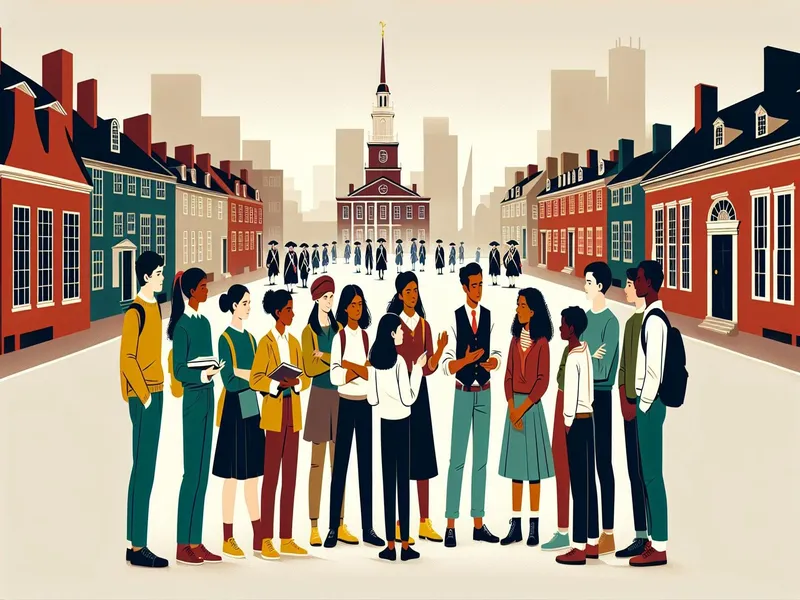
Whether you’re a parent seeking enriching activities for your kids or a lifelong learner eager to jump into history and culture, this journey promises more than just sightseeing. It’s about discovering the stories behind iconic landmarks and immersing yourself in diverse traditions.
Ignoring the potential of educational travel means missing out on profound personal growth and unique adventures. Without it, you might find your trips lack depth and meaningful engagement, turning what could be an enlightening experience into just another vacation.
Having explored many destinations across North America, I’ve uncovered hidden gems that offer rich educational value. From interactive museums to historical sites, there’s no shortage of opportunities to learn while you wander. Check out our curated list of travel activities for some inspiration.
Overview of Educational Travel in North America
Educational travel in North America isn’t just about hitting the usual tourist spots. It’s a journey into the heart of history, culture, and learning. When you think about it, it’s like stepping into a living textbook where every corner has a story to tell.
Consider Washington D.C., for instance. I remember walking through the National Museum of American History and feeling like I was time-traveling. The exhibits weren’t just displays; they were immersive experiences that made history come alive. You can touch artifacts (well, some of them) and hear stories from guides who are passionate about their subjects.
Then there’s Colonial Williamsburg in Virginia. This place is like jumping into a time machine set to the 18th century. Actors in period costumes roam the streets, reenacting daily life from way back when. It’s one thing to read about colonial times but another entirely to see it unfold right before your eyes.
If you’re more into natural wonders, don’t miss out on places like Yellowstone National Park. I took a guided tour there once and learned about geothermal features and wildlife habitats directly from park rangers who live and breathe this stuff every day.
For those fascinated by science and innovation, cities like San Francisco offer gems such as the Exploratorium—a museum dedicated to interactive science exhibits that engage all ages. You can experiment with light patterns or play with magnetic fields, making complex scientific principles fun and understandable.
- Washington D.C.: National Museum of American History
- Colonial Williamsburg: Living history museum
- Yellowstone National Park: Geothermal features & wildlife tours
- San Francisco: Exploratorium Science Museum
Top Destinations for Educational Travel

Exploring North America through educational travel offers a unique opportunity to dive deep into history, science, and nature. It’s like taking a walk through living textbooks where stories come alive.
Historical Sites
History buffs, rejoice! North America is brimming with sites that echo tales from the past. Colonial Williamsburg in Virginia is like stepping into an 18th-century town. You can watch blacksmiths at work or chat with “residents” about their colonial lives. Over in Washington D.C., the National Museum of American History brings history to life with immersive exhibits ranging from George Washington’s sword to Dorothy’s ruby slippers. If you’re ever keen on understanding the Civil Rights Movement, head to Selma, Alabama, and walk across the Edmund Pettus Bridge; it’s a powerful reminder of resilience and change.
Science Centers and Museums
Science nerds (like me) will find North America’s museums utterly fascinating! San Francisco’s Exploratorium is hands-on science heaven. Imagine learning about physics by playing with mirrors or creating giant bubbles – it’s both fun and mind-blowing! In Chicago, the Museum of Science and Industry boasts a real German submarine from World War II; standing next to it gives you goosebumps thinking about its history. For those curious about space, Houston’s Space Center lets you see actual spacecraft and meet astronauts – talk about out-of-this-world experiences!
National Parks and Natural Wonders
Nature lovers will be in awe exploring North America’s breathtaking landscapes. Take Yellowstone National Park: geysers shoot hot water sky-high while bison roam freely – it’s like nature showing off its best tricks! Visit Arizona’s Grand Canyon for jaw-dropping views that make you feel small yet connected to Earth’s ancient past. And don’t miss Canada’s Banff National Park; imagine turquoise lakes surrounded by towering mountains – perfect for hiking adventures or simply soaking in natural beauty.
Benefits of Educational Travel

Educational travel in North America offers so much more than just a change of scenery. It’s like diving into a whole new world where learning becomes an adventure.
Enhancing Classroom Learning
When you think about it, stepping out of the classroom and into real-world settings really brings those textbook lessons to life. Imagine discussing the American Revolution while standing on Boston’s Freedom Trail. It’s like history suddenly has color and sound! My visit to Colonial Williamsburg made 18th-century life feel tangible. Whether it’s science at the Exploratorium or geology in Yellowstone, these experiences deepen understanding in ways traditional classrooms sometimes can’t match.
Developing Cultural Awareness
Traveling isn’t just about seeing new places; it’s about experiencing different ways of life. Visiting Selma, Alabama, for example, opened my eyes to the profound impact of the Civil Rights Movement. You get to meet people from diverse backgrounds and hear their stories, which helps build empathy and understanding. Think of it as expanding your cultural bandwidth—each encounter adds a new layer to your worldview. When I explored San Francisco’s Chinatown, I didn’t just see buildings; I learned about traditions and tasted authentic cuisine that enriched my appreciation for Chinese culture.
Educational travel combines fun with learning in a way that’s both exciting and enriching.
Planning Your Educational Travel
Planning an educational trip in North America? I’ve got you covered. From budgeting tips to finding the best programs, here’s how to make your journey both enlightening and wallet-friendly.
Budgeting Tips
First things first—let’s talk money. Educational travel doesn’t have to expensive if you plan smartly.
- Start Early: Booking flights and accommodations several months ahead can save you a ton of cash.
- Use Student Discounts: Many museums, historical sites, and even airlines offer discounts for students. Always ask!
- Pack Smart: Bring essentials like snacks and water bottles to avoid overpriced tourist traps.
- Stay Flexible: Traveling off-season can significantly reduce costs. Plus, fewer crowds mean a better experience!
Think of it like planning a big party—you want everything perfect without overspending.
Finding Educational Programs
Finding the right programs is key to making your trip truly educational.
- Research Local Offerings: Check out local museums and cultural centers for special educational programs or tours.
- Online Platforms: Websites like Road Scholar offer curated educational trips that cover everything from history to science.
- School Collaborations: Some schools have partnerships with institutions across North America, providing unique learning opportunities.
Success Stories
You know, educational travel in North America isn’t just about seeing the sights; it’s about diving into experiences that leave lasting impressions. I’ve come across numerous success stories that showcase how life-changing these journeys can be.
Testimonials from Students
One student shared how visiting Colonial Williamsburg made history come alive. She said, “Walking through the streets felt like stepping back in time! I finally understood what my textbooks were talking about.” Another mentioned a trip to Yellowstone National Park: “Seeing Old Faithful erupt was incredible! It sparked my interest in geology and led me to major in Earth Sciences.” These testimonials highlight how real-world experiences can ignite passions and shape futures.
Educator Perspectives
Educators have seen firsthand the impact of educational travel on their students. One teacher recounted a visit to Selma, Alabama: “My students gained a profound understanding of the Civil Rights Movement by walking across Edmund Pettus Bridge. It was an experience no classroom could replicate.” Another educator praised San Francisco’s Exploratorium: “The hands-on exhibits made complex scientific concepts accessible and fun for my students. They left with a newfound enthusiasm for science.” These perspectives underscore the transformative power of learning outside traditional settings.
Summary
Educational travel in North America offers a unique blend of adventure and learning that goes beyond traditional classroom settings. By immersing ourselves in history science and culture we gain a deeper understanding of the world around us.
I’ve found that destinations like Colonial Williamsburg Yellowstone National Park and the Exploratorium provide unforgettable experiences that spark curiosity and inspire lifelong learning. These journeys don’t just educate; they transform perspectives and broaden horizons.
As we explore these incredible places it’s clear that educational travel is invaluable for personal growth and cultural awareness. So let’s embrace the opportunity to learn through travel enriching our minds and creating memories that’ll last a lifetime.